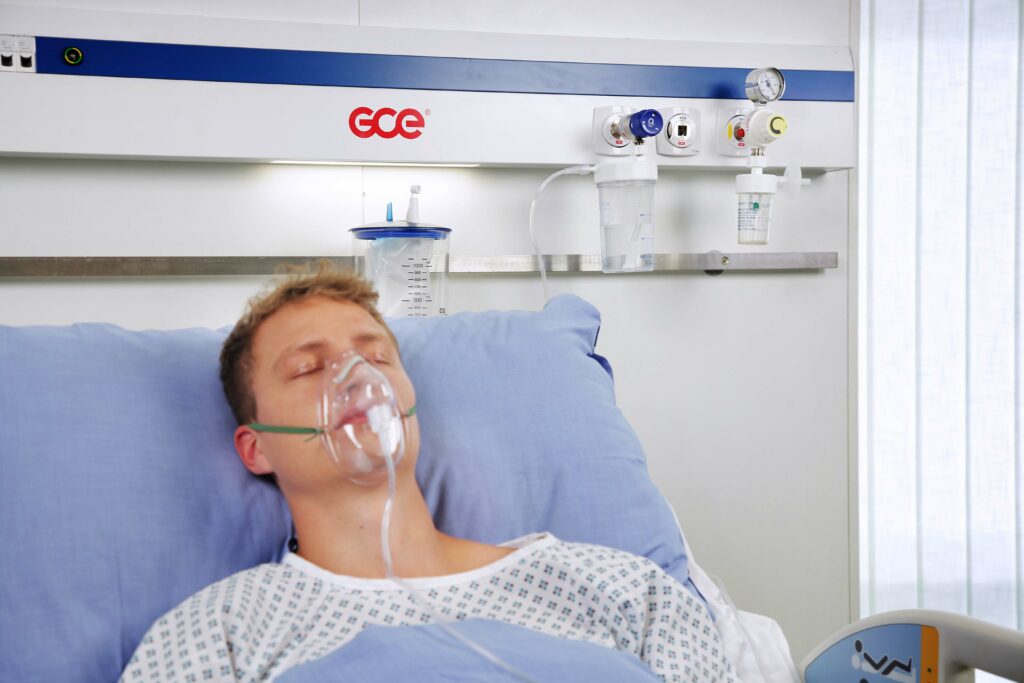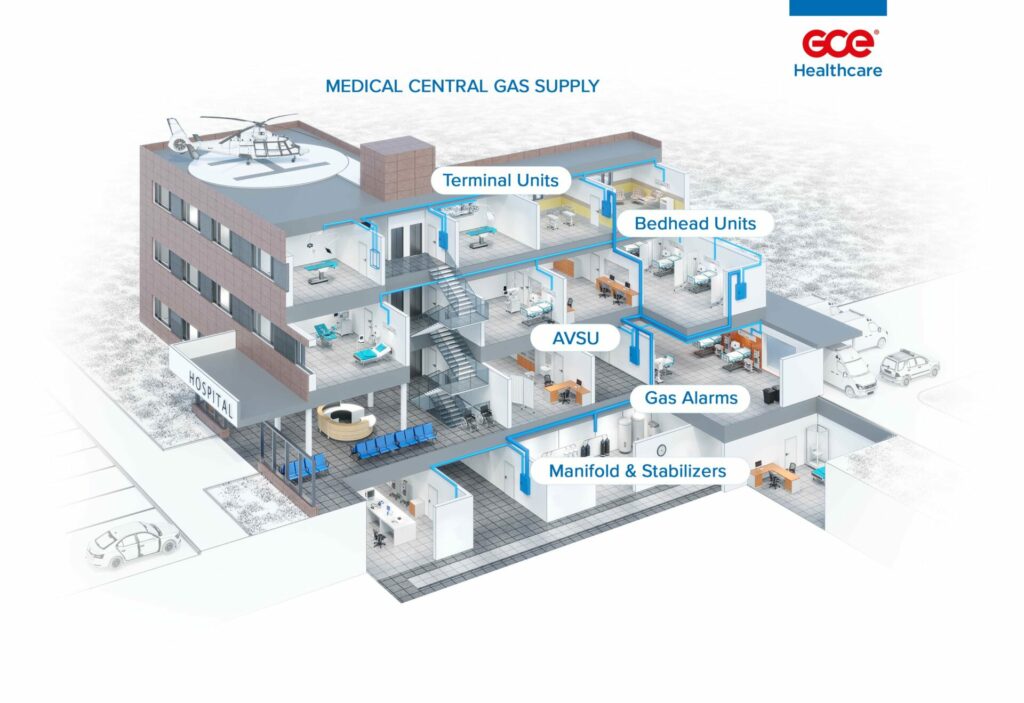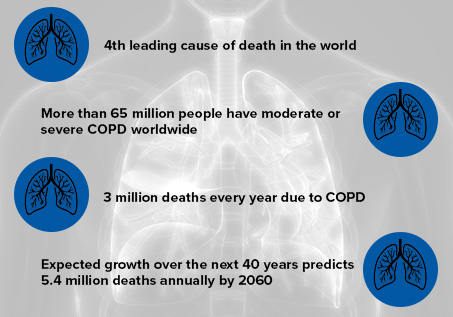As the medical and healthcare sector’s premier trade fair, MEDICA brings together over 100,000 of the world’s leading suppliers of equipment, technologies, medicines, and digital solutions.
Held annually at Messe Düsseldorf, MEDICA provides a comprehensive overview of the industry’s latest innovations and serves as a launchpad for new relationships between manufacturers and specifiers.
This year’s fair is set to be bigger than ever, with in-person events bouncing back to new levels of popularity after the pandemic. There will be a rich programme of forums, panel discussions, presentations, and competitions - all featuring the most exciting developments that our sector has to offer.
GCE Healthcare will be in Düsseldorf for the duration of MEDICA at stand J04 in hall 11, and our team is looking forward to meeting an international network of attendees.
Be sure to add our stand to your event itinerary, as we will be showcasing a wide range of industry-leading solutions including our online platform, Clarity - the latest in next-generation patient care that is revolutionising how patients and professionals access life-saving medical gases daily.

On the lookout for low pressure hoses that make life simpler in high pressure, medical environments?
GCE Healthcare has the widest range of low pressure and medical hose systems available. Making it quick and easy to source the country specific connections your professionals need.
What’s more, our innovative probe design has also been developed in-line with most international standards - ensuring seamless and safe connections to central gas supply systems the world over.
Trust in #GCEHealthcare to deliver simply superior solutions - as standard.
Have confidence in supplying our low pressure hoses:
Use our new web configurator tool to build low pressure hose and probe system in minutes.
On the 4th and 5th Of October GCE Group participated in the Healthcare Estates show in Manchester. This was a unique opportunity for the Healthcare team to showcase the new AVSU and Auto change manifold for the HTM marketplace.
Over the 2 days we had great interest in the products, the unique innovations and features we have developed, and moreover how we are being seen as being a leading player and innovative supplier in the HTM marketplace.
Our presence and new technology and advances in the product design were very welcomed by installers, hospitals, consultants, gas companies, architects, and M&E contractors. Over the 2 days we had 40+ visitors to the stand.
Thank you all who participated!
GCE Healthcare team





Come and speak to our team to learn why we’re already the go-to partner for EFM professionals globally.
The GCE Group is investing heavily in developing new HTM solutions meaning we’re best-placed to serve UK markets.
Our values mean we take complex, challenging projects in our stride whilst being firmly committed to simplicity.
To learn how GCE Healthcare can take your operations from strength to strength in the years to come by relinquishing pressure and helping you breathe easier.
Find GCE Healthcare at Stand A57!

Dear reader,
If you are currently a User of an Oxygen Concentrator and would like to provide us with your valuable feedback, please read below.
The purpose of this Study is to improve the design of devices and their respective instruction Manuals, based on the input of Users in England, UK.
Users will be given one of two portable models (Zen-O™ and Zen-O lite™) to familiarize themselves with, following which we will be asking them to perform certain basic tasks (e.g. turn the device on/off, check the battery level) and to give us their feedback based on a set of questions.
Since the findings of this Study will be utilized as input to the future designs of Oxygen Concentrators, we are keen to understand the Users' perspective.
If you would like to participate with a view to support us in continuously improving the quality of care, please contact:
Callum Kenny
Technical Filling Specialist
Email: callum.kenny@gcegroup.com
Tel: +44 (0)1942 292 978

The correct oxygen regulation device depends on delivery method to the patient. Ventilators, anesthesia machines and other medical equipment have built-in flow control, so for those applications, only gas pressure regulation is necessary on the gas source.
In other applications, oxygen is delivered directly to the patient via a nasal cannula, oxygen mask, face tent, oxygen hood, CPAP, etc. These applications require a combination of pressure regulation and flow control.

At GCE, we’re dedicated to making our medical gas devices safer and highly effective for those in the health professional sphere.
We ensure the design, manufacture, packaging, labelling, storage of products complies with ISO standards and FDA guidance so that you can provide patients with the highest standards of safety and care.
Regularly reviewed, you can be assured our product portfolio is FDA and ISO approved.

How to clear up a common misunderstanding about the difference between gas pressure regulation and gas flow regulation?
Pressure is the measure of force (exerted by a liquid or gas) applied to a unit of “area”. The gas source (a cylinder or bulk delivery system) is at a high pressure. For example oxygen cylinders have usually service pressure of 200 bar (note they may be filled up to 300 psi). A pressure regulator reduces the high service pressure to a much lower delivery pressure. A standard medical oxygen delivery pressure is about 4 bar.
Flow is a measure of output in terms of volume per unit of time. In medical applications, oxygen flow is the dosage delivered to the patient and is expressed in liters per minute (l/m).
Thus, flow meters and regulators serve distinct purposes!

At GCE Healthcare, we're renowned for providing leading healthcare solutions. In our latest animation, learn how we can help equipment specifiers design gas supply in ambulance, prepared for any emergency.
Watch to discover our healthcare solutions for administration of medical gases in road ambulances. Here, you'll receive a walkthrough of equipment to learn how out solutions help paramedics provide the highest quality of pre-hospital care.
Take the tour of the GCE ambulance.
Featuring:
Looking for a flowmeter device?
Watch the video to find out why you should choose GCE’s solution
Featuring an ergonomic design, 4 different flow options and a range of connections - this innovative device seamlessly connects to central gas supply systems.
The source of medical oxygen also varies by delivery point. Bulk vessels are used in mid- to large-sized hospitals and long-term care facilities that require constant access to gas. The bulk tank is connected to a central gas supply system that has terminals throughout the facility.

GCE Healthcare welcomed their colleagues on Medical Central Gas Supply (MCGS) training, for the first time following the Covid restrictions.
The team went a thorough overview of all MCGS from the product range, to ISO standard to MDR. They have been presented also the main topics and goals of the Hospital Ward and Emergency equipment.
The event was a great success and we are prepared to continue to support our colleagues and customers.
Please contact our teams in any matters.

Knowing which devices to choose depends on the application for which it’s going to be used. The primary applications for oxygen (and oxygen mixes such as nitrous oxide) are hospital wards, emergency medical services (ambulance, rescue kit), long-term care facilities and home. Each of these situations has different variables that require different devices.

The first medical regulators were just industrial regulators with a few alterations. Today’s medical gas control devices have many advanced design features that make them easier to use, more accurate, simpler to maintain and less costly.
Now, as #COVID19 has brought about the highest need for medical oxygen than ever before, there’s a higher demand for gas delivery devices such as regulators and flowmeters.

Newly release video for GCE Healthcare Portable Oxygen Concentrator will help oxygen therapy patients to understand how to unbox and set up Zen-O lite™ Portable Oxygen Concentrator.
Watch the video which walks you through the setup process and shows you the range of accessories that comes with each device.
Check more information about Zen-O lite™ here:
New video for GCE Healthcare Portable Oxygen Concentrator will help oxygen therapy patients to understand how to unbox and set up Zen-O™ Portable Oxygen Concentrator.
Watch the video to find out how this innovative device can help you stay on the go thanks to pull cart or backpack.
Check more information about Zen-O™ here:
From 26th May 2021 the Regulation (EU) 2017/745 of the European Parliament and of the Council, on Medical Devices (MDR) is applicable and replaced the Council Directive 93/42/EEC, concerning medical devices (MDD).
With respect to transitional provisions GCE's EU Certificate according to Annex II of MDD is valid until 27th May 2024. This means that GCE can continue to place its Class IIa and IIb medical devices on the market until the certificate expires.
Class I medical devices have been assessed according to the new requirements and are in compliance with the MDR.
GCE, as a credible and reliable manufacturer of medical devices, works to ensure assessment of its devices according to the new requirements and is ready to continue with the delivery of compliant medical devices according to MDR after the expiration of the current certificate. Please follow our website where you can find GCE´s valid certificate and where you can find also updates relating to GCE products.

Here we go! New Central Gas Supply system catalogue is available online on our website.
Check full version of the catalogue here:

When: March 25, 14:30 GMT (15:30 CET)
What: During the pandemic the medical gases business has been in the spotlight more than ever before and not for all the right reasons. Attenders will talk all things medical gases and the supply chain.
On the agenda there is also the future for medical gases - from the digitisation of personal medicine to the data and digital integrity behind it.
Who: Rob Cockerill and Thomas Dee from gasworld (hosts of the webinar) will discuss with Fabio Pinzi (Ambra Sistemi), Leonardo Daniele Ferrari (SOL Group) and Gareth Pemberton (GCE Group) about last two years which were affected by Covid-19.

Everybody understands the importance of reading and fully understanding the instructions before using any product, especially when we are talking about a medical product. In order to facilitate accessibility of GCE's instructions for use, we decided to create a Usage guide video for our medical combination valve - MediVital®.
Please be aware that the created Usage guide video does not replace the user manual, but serves as assistance material in addition to the user manual. You can find the usage guide video on the
With GCE’s renowned reputation for innovation, the company has developed the industry’s leading, fully-functioning Residual Pressure Device (RPD) within the compact Medical Pin-Index valve.
You can now see the many benefits this smart device offers in a new animation created by GCE.
Available for all medical gases with global inlet connections, learn how GCE’s innovative medical cylinder Pin-Index valve with RPD, provides protection from both back-flow contamination and illicit-filling.
Packaged with a 15-year Service Life you can ensure your customer receives the purest, contaminant-free medical gas product.
Watch the animation now to learn more about this innovative device
Be the first one who can download a new Central Gas Supply System catalogue before it becomes available ONLINE!
Look back with us at last year 2021.
We are growing and improving to continue to provide you with the best quality products for medical gas supply.
A couple of examples for all:
We make medical gas usable, also in 2022.
GCE Healthcare team
Watch our latest animation to find out more about a sleek, stylish, yet space-saving area valve service unit.
The AVSU SLIDE in pressure watch or shut-off valve box variants is used for monitoring and controlling the gas pressure from the source to the point of use on department and/or room level.
Discover more about AVSU SLIDE
Dear colleagues, partners,
Thank you for your excellent cooperation in year 2021 and we wish to you and to all your loved ones a joyous holiday season and new year 2022 filled with happiness, laughter, joy and health.
GCE Healthcare
With a new anti twist, space-saving swivelling probe, this design saves space and can be operated with one hand for maximum efficiency and convenience.
Equipped with a comfortable, safe, tallied shape grip, these systems feature a highly-visible gas type identifier, enabling the operator to work at premium safety conditions. Suitable for all gas types in six variants and also featuring a non-return valve for dangerous gases - gas pressure shocks can be prevented.
Adding to its repertoire of market leading healthcare products, this design is both MDR and FDA compliant and adheres to 90% of worldwide local standards.
The range is ideal for all applications, including customers with specialised demands, such as nursing staff and machine manufacturers.
To discover more about this new range of medical gas supply probes, visit
Living with a long-term lung condition such as Chronic Obstructive Pulmonary Disease (COPD) is not without its challenges, but with good therapy patients can still live an active lifestyle. Here you will find everything you need to know about COPD, how it affects the human body and what recommended treatments are available. If you, a friend, family member, or patient is suffering from this condition, this is the place to learn more about how you can get it under control and live a positive life.
Chronic Obstructive Pulmonary Disease, or COPD, is a term used to describe a group of lung conditions. Patients with COPD find it difficult to empty air out of their lungs due to narrowed airways. Two of the most common conditions are bronchitis and emphysema. It should be noted that COPD is often confused with asthma, but is a separate condition.
Most patients suffer from a combination of the following symptoms. They experience them all the time, or appear worse when they are ill with an infection. Being in an environment with poor air quality can also set-off these symptoms and cause a ‘flare-up’:

It is important that COPD is diagnosed properly by a medical professional to avoid confusion with less severe conditions, such as asthma. Healthcare providers looking for signs of COPD may conduct a progressive set of tests, including:
Yes, it is a chronic condition, but treatments are available to ensure that patients can maintain a healthy and somewhat active lifestyle. COPD affects more than 65 million people worldwide and is directly responsible for around three million deaths per year. The average five-year life expectancy ranges from 40 - 70 % - meaning that 40 - 70 out of every 100 people with COPD will survive longer than five years.
The main issues for patients with COPD are:
COPD is caused by long term lung damage as a result of breathing in harmful, airborne substances. This can include the inhalation of tobacco smoke, air pollution or other forms of toxic smoke. Prolonged exposure to chemicals, fumes and smoke in work environments can also cause COPD.
Only very rare genetic conditions can cause COPD, but if a parent has suffered from chest problems you are more at risk. However, you are most likely to develop COPD if you are a smoker, had a lung condition as a child and currently aged 35 years or older.

Given that COPD affects so many people worldwide, science and technology has rapidly moved on to help patients manage their condition and overall lifestyle.
A whole range of healthcare professional advice and therapy can be sought, including expert physiotherapists, dieticians, occupational therapists, counsellors/talking therapists and even smoking cessation advisors.
Patients suffering from COPD can make the biggest difference to their health and lifestyle by closely and consistently adhering to professional healthcare advice and therapy.
The basis of COPD treatment is to quit smoking. This is the only way to prevent further worsening of the disease and to maintain the ability to breathe.
Existing lung damage can no longer be repaired, so the goal of treatment is to relieve shortness of breath and coughing. In essence, helping maintain adequate breathing for as long as possible so that patients can perform everyday activities and lead a 'normal' lifestyle.
A doctor may prescribe medication, usually in an inhaler, to help open the patient's airways. They may recommend long-acting medicines that can be taken every day as well as short-acting medicines that are used when needed, such as before an activity.
In the event of an outbreak, other drugs are usually given in tablet form and hospital treatment may also be required. In more serious instances, oxygen therapy is required to manage COPD cases.

Supplemental oxygen therapy increases the amount of oxygen the lungs receive and deliver to the bloodstream. In the last few decades, great strides have been made to manufacture devices that patients with COPD can use, at home or on the move, to deliver this extra oxygen support.
So called Portable Oxygen Concentrators (POCs) are prescribed by medical professionals to patients with severe COPD. They come in two main forms - 'Pulse only' or 'Pulse and Continuous' - which describes how they deliver oxygen to the patient. Importantly, both types are lightweight, portable and operate at low noise volumes which makes it easier and more convenient for the patient to live life to the fullest.
GCE Healthcare manufactures two of the leading POCs on the market, called Zen-O™ and Zen-O lite™. Each device can be enabled with mobile/cellular connectivity which means that home oxygen providers can keep a close eye on the patient’s oxygen therapy, via the device.
For those looking to maintain an active lifestyle and complete peace of mind, a POC device from GCE Healthcare is an optimal solution.
GCE has been at the heart of healthcare solutions for decades.
GCE ambulance gas supply systems provide solutions for resuscitation, ventilation and the administration of gases. We've developed this animation for ambulance equipment specifiers and users to showcase exactly how our life saving solutions are used.
The care received in an ambulance is vital. See how GCE gas supply solutions help paramedics provide the best care possible to patients, when they need it the most.
Find out more about our products: Emergency Gas Supply Systems
As a result of Covid-19, more and more patients, who are already in a stable state, are resorting to home solutions using oxygen therapy. This can lead to accidents and is potentially dangerous!
GCE medical combination valves connected to a medical oxygen cylinder are suitable for prescribed oxygen therapy, but should only be used following prescription from a doctor and after training from medical personnel to ensure safe use.
Do not use GCE medical gas equipment unless properly prescribed by a doctor and you are properly trained and familiar with the product and the Instructions For Use.
IFUs for medical combination valves are available here.
INTERNATIONAL HOSPITAL BUILD AND INFRASTRUCTURE EXPOSITION
The 22nd China Hospital Construction Conference International Hospital Build and Infrastructure Exposition will be held in Shenzhen World Exhibition & Convention Center from Oct. 14-16,2021.
GCE will participate this event again to contribute our wisdom and strength to promote the construction of a better hospital and the upgrading of medical equipment and medical technology industries…
Looking forward to your visit!
For more information please visit chccchina.com
In this period of the health crisis, GCE provides you with a technical bulletin to allow you to best disinfect our medical equipment to effectively fight against #COVID19.
Download the technical bulletin in English.
We remain at your disposal for any questions or requests for information at the usual numbers and times. You can see our GCE contact page here.